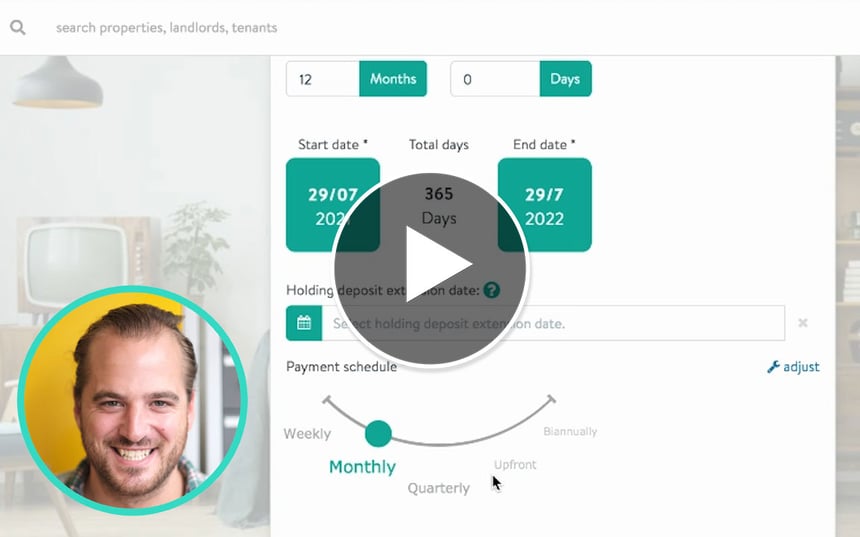4 ways to move your landlords from let-only to fully-managed
Lettings guru, Sally Lawson, explains how you can help landlords see the value in moving from a let-only to fully-managed service.
What objections are you hearing when you try to convert let-only landlords to fully-managed? The latest figures show just 18% of rental properties fall into the fully-managed category, which means all-too-often these conversations either aren’t happening, or aren’t having the right effect.
With more than 30 years in the industry under my belt, I’m sure I’ve heard most of the reasons a landlord could ever give for not wanting to have their portfolio managed by an agent.
So that’s why I want to share with you some of the most common objections and – crucially – how you can overcome them.
1. Clearly explain the benefits of your support to landlords
Landlords may feel the only reason they need an agent is to market their properties, find tenants, and complete references and contracts.
They could be forgiven for thinking this is the hardest part done – especially if they’re new to letting out properties. But, as agents, we understand that tasks like inspections, carrying out routine maintenance, and handling tenant enquiries can take up an awful lot of time and effort.
So, how can you effectively share the benefits of a fully-managed service with your clients, and potential clients? What about:
- Talk about the risk they are taking by self-managing, such as breaching regulations, banning orders, fines or even criminal prosecution through lack of knowledge
- Post about the risks on your external channels such as blogs, podcasts, emails and social media
- Host a short webinar or in-person event focused on the topic of compliance and legislation
- Have a process to help landlords understand how they’re personally at risk, where you can advise them on how converting to fully-managed would help.
- Motivate your team by targeting them on converting let-only landlords to your fully-managed service
I know many will say that people are motivated away from risk and some are motivated towards reward, but for let-only to fully-managed conversion, we find moving away from risk - risks they don’t even know they are carrying - works best.
2. Outline how much work is involved in managing a property
Apart from the risks, it’s also worth covering the time it takes them to do all that is necessary. To do this, work out how much time you spend per week managing each property - as this can be a persuasive stat to share with landlords – especially those with larger portfolios where you can multiply this number by the amount of properties they own.
Of course, having a well-maintained property with respectful tenants in place can help things run smoothly, but you can never mitigate the chance of emergencies, extreme weather, or the simple fact that things sometimes break.
Managing your own property is possible, of course. But that doesn’t mean it’s desirable, especially with over 170 pieces of legislation to fall foul of. If they’ve got another job alongside being a landlord, can they afford to take time off to sort out an urgent maintenance issue?
If they’ve got a family, do they want to miss out on weekends and evenings because they’re too busy inspecting their properties?
3. Break down your costs and time to help them understand the value of your service
What a landlord is saying if they object to spending extra for a fully-managed service is that they don’t believe in the value of that service.
I find it helpful to explain the cost of a solicitor sending one letter, or the fact that evictions are now taking 12 months and longer to secure, so there’s a risk of loss of rent during that time plus legal fees – all of which can be prevented by good strong management.
You can also have a conversation with them where you’re not necessarily focusing on the money, but instead - depending on their priorities - how much extra time they’d have per week, how they’d not have to handle incoming calls and emails from tenants, or how they wouldn’t even need to think about maintenance and inspections.
4. Make sure that they're aware that they have the option to upgrade
There are agents out there who are so busy trying to bring on board new landlords, they’ve essentially forgotten about the potential associated with the let-only landlords already on their books.
Directly asking a landlord isn’t something you can do too often, but that’s where everything we talked about earlier – digital resources, events etc – come into play.
Keep reminding them about the huge risks they are taking and the areas they likely have missed, plus the value associated with you handling everything for them, keep reminding them what they stand to gain, and you may well see those ‘no’ answers turning into a ‘yes’.









